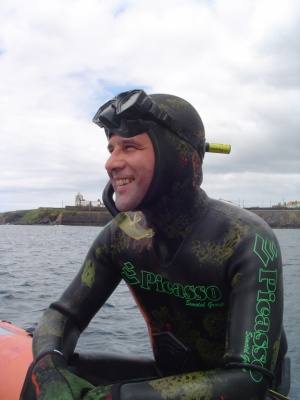Sampaio E., Barreiros J.P. & Rosa R. (2018) A potential new endemism: speciation of the common octopusOctopus vulgaris in Cape Verde’s Desertas Islands? Zoologia Caboverdiana, 7(2), 39-47.
Cabo Verde is a unique biogeographical region, where by mixing temperate and tropical characteristics an unusually high number of endemic species are reported. Cephalopods are central pieces of trophic networks worldwide, interacting as predator/ prey and competing with fish for ecological niches. We aimed to assess how the topography, prey availability, and predatory pressure of the Desertas Islands shaped the behaviour and ecology of the existing Octopus vulgaris population. Visual census (both underwater and on tidal rock pools) were performed on Santa Luzia Island (20 days) and Raso Islet (eight days). Octopus vulgaris individuals were found only in intertidal areas, during low tide, and mean population morphometry averaged 35.6 ± 10.4 cm (total length) and 175.0 ± 53 g (wet weight). The markedly reduced size of O. vulgaris, only partly explainable by Bergmann’s rule, and exclusion from subtidal areas, appears to have been mainly driven by severe predatory pressure and strong inter-specific competition for limited habitat niches. The induced behavioural and morphometric alterations may be the product of developmental plasticity, or have arisen from deeper genetic alterations, which would portray a potential speciation phenomenon of octopus’ populations residing on Cabo Verde’s Desertas Islands.

